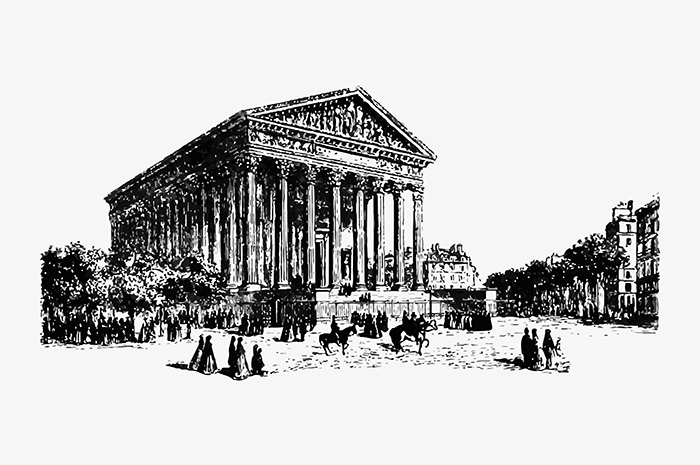Some of the earliest examples of architectural drawings are ground plans. The word ‘plan’ in German is ‘Grundriss’ which correlates to ‘ground cut’ in English.
The history of architectural drawings dates back to the ancient Egyptian and Mesopotamian eras. Some examples of the earliest architectural drawings: The Statue of Gudea, ruler of Lagash in Mesopotamia (c.2200 BC). The plan is sitting on his lap and probably represents a building he has commissioned or had built.
The measured plan of a temple, New Sumerian c.2300-2000 BC. Note the star at top left. House Plan, Babylonian (c.1500-1100 BC) lines indicate walls, cross-strokes indicate openings.
The essence of Greek architectural drawing and practice lied within the details in those ages.
The most important of these, called Syngra – Phai, were detailed descriptive specifications, which even included dimensions.
Details such as cornice molding and pieces of ornamental sculpture were described through the use of the Paradeigma, a full- scale mock-up or model, and the Anagra- pheus, or template.
Since the inception of Western architecture in classical Greece, the architect has not ‘made’ buildings; rather, he or she has made the mediating artefacts that make significant buildings possible.
There are surviving Roman plans, although they were not used for design purposes, which reflect architectural practice. Prior to the Renaissance, architectural drawings were rare, certainly in the sense that is familiar to us. In the Middle Ages, architects did not conceive a whole building and the very notion of the scale was unknown.
The habit of drawing became more widespread in the second quarter of the thirteenth century. In the Gothic period, there were significant developments in architectural drawing.
Although not methodical, conceptual, working and record drawings were becoming very accurate. Villard de Honnecourt was a master mason that compiled a sketchbook or pattern book of conceptual and record drawings; known as the best surviving, most complete medieval sketchbook.
Maximum Value. Achieved.







 How 3D Architectural Visualization Boosts Property Pre-Sales?
How 3D Architectural Visualization Boosts Property Pre-Sales?  A Guide to 3D Condo and Apartment Rendering for Residential Projects
A Guide to 3D Condo and Apartment Rendering for Residential Projects  Details of Modern Ranch Style Open Floor Plans for Builders & Buyers
Details of Modern Ranch Style Open Floor Plans for Builders & Buyers  How 3D Landscape Designs for Exteriors Can Elevate your Property’s Value
How 3D Landscape Designs for Exteriors Can Elevate your Property’s Value
I think this is one of the most vital info for me. And i am glad reading your article. But want to remark on few general things, The site style is perfect, the articles is really nice : D. Good job, cheers
We’re really happy that you liked this piece of information. Thanks for appreciating our blog style and articles too. Keep reading and visit our services section also.
Wow! Finally, I got a web site from where I can genuinely get valuable information concerning
my study and knowledge.
Thanks for appreciating our blog. We’ll soon share more interesting topics
Keep checking and happy reading!